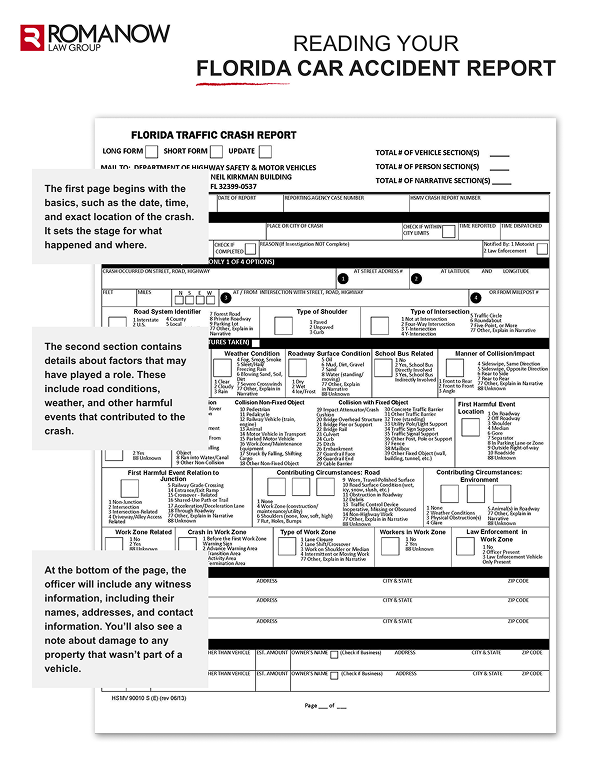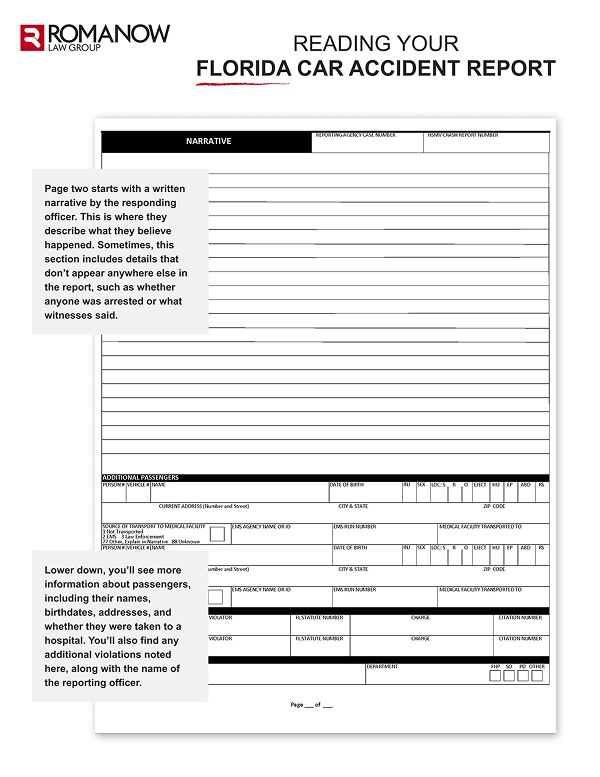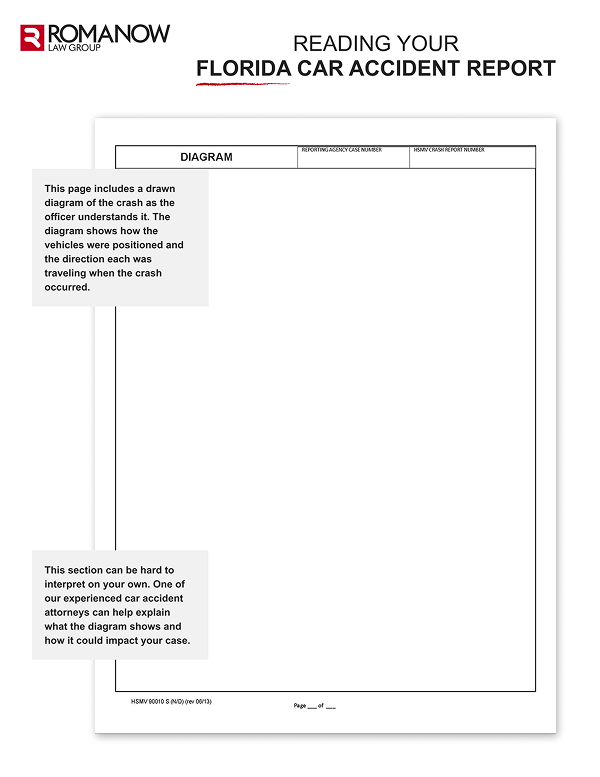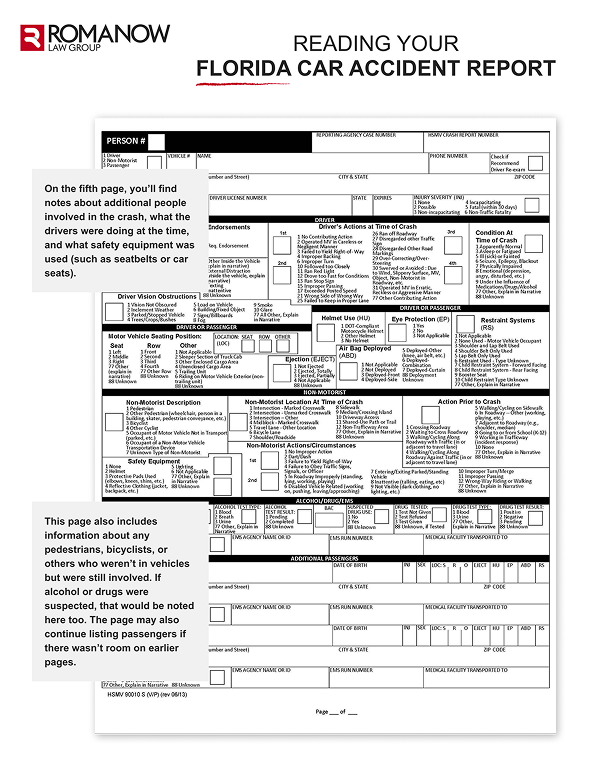How to Read Your Florida Car Accident Report
Our Miami car accident lawyers can help you make sense of your crash report
After a car accident in Miami, one of the first things you’ll receive is a Florida Traffic Crash Report. It might look like just another form, but make no mistake, this report plays a huge role in the outcome of your case. Insurance companies use it to evaluate liability. Attorneys use it to investigate. And if there’s a mistake on your Florida accident report, that could cost you money.
You can usually get a copy of your report within 10 days, either online through the Florida Crash Portal, in person at the responding police agency, or directly through your attorney. If you need help getting a copy, let us know.
The Miami car accident lawyers at Romanow Law Group can help you understand what’s in your crash report, what it means for your claim, and what to do if something doesn’t look right. If you’ve been hurt in a car accident and you’re staring at a confusing police report filled with codes, checkboxes, and abbreviations, we’ve got you covered. Contact us today for a free consultation and find out how we can help you.
“These guys are with you from start to finish. I did the leg work and shopped my case, I’m happy with the choice I made. Out of the top five law groups (including E Synder) that I talked to the choice was easy. They are personal and professional and I’d recommend them again.” – D.S., ⭐⭐⭐⭐⭐
What’s included in the crash report and what should I look for?
This multi-page document, completed by the investigating officer, outlines the key facts and observations from the crash.

Page 1
The first page begins with the basics, such as the date, time, and exact location of the crash. It sets the stage for what happened and where.
The second section contains details about factors that may have played a role. These include road conditions, weather, and other harmful events that contributed to the crash.
At the bottom of the page, the officer will include any witness information, including their names, addresses, and contact information. You’ll also see a note about damage to any property that wasn’t part of a vehicle.

Page 2
Page two starts with a written narrative by the responding officer. This is where they describe what they believe happened. Sometimes, this section includes details that don’t appear anywhere else in the report, such as whether anyone was arrested or what witnesses said.
Lower down, you’ll see more information about passengers, including their names, birthdates, addresses, and whether they were taken to a hospital. You’ll also find any additional violations noted here, along with the name of the reporting officer.

Page 3
This page includes a drawn diagram of the crash as the officer understands it. The diagram shows how the vehicles were positioned and the direction each was traveling when the crash occurred.
This section can be hard to interpret on your own. One of our experienced car accident attorneys can help explain what the diagram shows and how it could impact your case.

Page 4
Page four only applies to crashes involving commercial vehicles such as large trucks. At the top, you’ll find information about the vehicle itself, its insurance, any hazardous materials involved, and where the impact occurred.
The middle of the page includes more specific details such as vehicle type, trailer type, and any crash-related factors tied to the commercial vehicle.
At the bottom, the report lists any violations related to the crash. This includes the violator’s name, the Florida statute they violated, the type of charge, and the citation number.

Page 5
On the fifth page, you’ll find notes about additional people involved in the crash, what the drivers were doing at the time, and what safety equipment was used (such as seatbelts or car seats).
This page also includes information about any pedestrians, bicyclists, or others who weren’t in vehicles but were still involved. If alcohol or drugs were suspected, that would be noted here too. The page may also continue listing passengers if there wasn’t room on earlier pages.
Click here to download a printable version.

